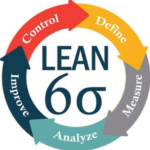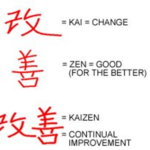
In the world of lean management, there is a powerful tool that allows leaders to gain valuable insights, foster collaboration, and drive continuous improvement within their organizations. This tool is known as the Gemba walk. Derived from the Japanese term “Gemba,” meaning “the real place,” the Gemba walk is a practice that involves going to the location where value is created to observe and understand the actual work process. By engaging with employees, gathering first-hand knowledge, and exploring opportunities for improvement, leaders can make informed decisions and drive positive change.
In this comprehensive guide, we will delve into the concept of the Gemba walk, exploring its origins, key principles, and steps to execute a successful walk. We will draw insights from various sources, including articles on lean management and Gemba walks, to provide you with a comprehensive understanding of this powerful management practice. So, let’s embark on this journey to discover the true power of Gemba walks.
The Origins and Principles of Gemba Walks
The practice of Gemba walks can be traced back to the Toyota Production System (TPS), a revolutionary approach to manufacturing developed by Toyota. Rooted in the philosophy of eliminating waste and maximizing value, TPS emphasizes the importance of direct observation and engagement with the work process. Taiichi Ohno, considered the father of TPS, introduced the concept of Gemba walks as a means for managers to leave their offices and gain insights into the actual work happening on the shop floor.
Gemba walks are guided by three fundamental principles:
- Go and see: The core idea behind the Gemba walk is for leaders to regularly walk the shop floor and immerse themselves in the actual work environment. By physically being present where value is created, leaders can observe the process, identify wasteful activities, and gain a deeper understanding of the work being done.
- Ask why: A Gemba walk is not just about observation; it also involves active communication with employees. Leaders should engage in meaningful conversations, asking open-ended questions to uncover the root causes of problems and explore opportunities for improvement. By listening and seeking to understand, leaders can gather valuable insights from those directly involved in the work.
- Respect people: Gemba walks are not meant to be “boss walks” where leaders point fingers and blame individuals. Instead, the focus should be on collaborating with the team and identifying problems within the process, not the people. By fostering a culture of respect, leaders can create a safe and open environment that encourages employee engagement and participation.
The Gemba Walk in Practice
Now that we have established the principles behind Gemba walks, let’s explore the key steps to execute an effective walk. These steps will guide leaders in planning, executing, and following up on their Gemba walks, ensuring maximum impact and sustained improvement.
Step 1: Define a Clear Purpose and Theme
Before embarking on a Gemba walk, it is crucial to define a clear purpose and theme. Determine the specific area or process you want to focus on during the walk. This could be productivity, cost efficiency, safety, or any other aspect relevant to your organization’s goals. By having a defined purpose, you can direct your efforts and make the most of your time on the shop floor.
Prepare a list of questions related to your theme that you will ask during the walk. These questions will provide guidance and structure, enabling you to gather the necessary information and insights from employees.
Step 2: Prepare and Engage Your Team
To ensure a successful Gemba walk, it is essential to prepare and engage the team that will be observed. Communicate the purpose and benefits of the walk to the team members, emphasizing that it is a collaborative process aimed at continuous improvement. By involving the team and fostering a sense of shared responsibility, you create an environment that encourages open communication and participation.
Step 3: Focus on the Process, Not the People
During the Gemba walk, it is important to maintain a focus on the process rather than individual performance. Remember that the purpose of the walk is to observe, understand, and improve the process itself. Avoid pointing fingers or assigning blame to individuals. Instead, seek to identify areas of improvement and work collaboratively with the team to find solutions.
Step 4: Follow the Value Stream
One of the key principles of Gemba walks is to follow the value stream. By tracing the flow of value across departments, functions, and organizations, leaders can identify areas with a high potential for waste activities. These areas of waste, once identified, can be targeted for improvement, leading to increased efficiency and performance.
Step 5: Document Your Observations
During the Gemba walk, make sure to document your observations. Take notes, capture photos or videos (if appropriate), and record any insights or ideas that come to mind. This documentation will serve as a valuable reference for further analysis and reflection after the walk.
Step 6: Ask Thoughtful Questions
Engage in meaningful conversations with employees by asking thoughtful questions. Use the 5 Ws – Who, What, Where, When, and Why – to guide your inquiries. By asking open-ended questions, you encourage employees to share their perspectives, experiences, and ideas for improvement.
Step 7: Avoid Immediate Suggestions for Change
Resist the temptation to offer immediate solutions or implement changes on the spot during the Gemba walk. Instead, focus on gathering information and understanding the process thoroughly. Take the time to analyze the data and observations collected before making any decisions or recommendations.
Step 8: Involve an Extra Pair of Eyes
Consider inviting a colleague from another department or a different area of expertise to accompany you on the Gemba walk. Their fresh perspective and different set of experiences may uncover insights and perspectives that you may have overlooked. By involving others, you broaden the scope of your observations and enhance the overall effectiveness of the walk.
Step 9: Follow-Up and Share Findings
After the Gemba walk, it is crucial to follow up with the team and share your findings. Communicate what you have learned and discuss any upcoming changes or improvements that will be implemented. This step ensures that the Gemba walk has a lasting impact and creates a culture of continuous improvement within the organization.
Step 10: Reflect and Iterate
Gemba walks should not be seen as a one-time event but rather as an ongoing practice. Reflect on the outcomes of each walk and iterate on your approach. Learn from your experiences and continuously refine your Gemba walk process to maximize its effectiveness.
Conclusion
Gemba walks have proven to be a powerful tool for leaders seeking to drive continuous improvement and enhance their understanding of the work process. By going to the “real place” where value is created, leaders can observe, engage, and collaborate with employees to identify opportunities for improvement. Following the key principles and steps outlined in this guide, leaders can execute effective Gemba walks that result in increased efficiency, employee engagement, and overall organizational success.
Embrace the power of Gemba walks and unlock the potential within your organization. Remember, it is through direct observation and inquiry that true understanding and improvement are achieved. So, step out of your office, immerse yourself in the actual work environment, and embark on the journey of continuous improvement through Gemba walks.







